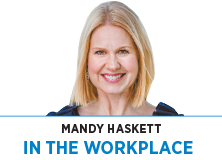Subscriber Benefit
As a subscriber you can listen to articles at work, in the car, or while you work out. Subscribe Now In a hermit crab’s lifetime, it might measure a few millimeters to a few inches in length. As their bodies grow, hermit crabs are constantly in search of their next (larger) shell-shelters. When a new shell washes ashore, and a crab spots it, something astonishing happens. It waits by the shell for other crabs to gather. Then they size one another up and form a line smallest to largest. A crescendo of crab. Here’s the magic: The biggest crab moves into the largest shell, and subsequently, each crab swiftly moves into the shell vacated by its larger neighbor—setting off what’s called a “synchronous vacancy chain.”
In a hermit crab’s lifetime, it might measure a few millimeters to a few inches in length. As their bodies grow, hermit crabs are constantly in search of their next (larger) shell-shelters. When a new shell washes ashore, and a crab spots it, something astonishing happens. It waits by the shell for other crabs to gather. Then they size one another up and form a line smallest to largest. A crescendo of crab. Here’s the magic: The biggest crab moves into the largest shell, and subsequently, each crab swiftly moves into the shell vacated by its larger neighbor—setting off what’s called a “synchronous vacancy chain.”
Not hermits at all, these creatures rely entirely on their social networks to survive, building systems that ensure everyone in the group benefits from new resources at the same time.
I’m so moved by this—the synchronous part in particular. Leadership (even in the crustacean kingdom) isn’t about being the boss. It’s the awesome responsibility of creating the conditions by which everyone can rise up. Everyone can literally grow.
What might we learn from the hermit crabs?
Survival (in/out of work) requires relational fitness.
Julie Rice and Elizabeth Cutler, founders of SoulCycle, are building it without the bike in their new venture called Peoplehood. They explain that we all know what we need to do to achieve physical fitness: Move a few times a week, lift weights, etc. But we all expect relationships to just work out on their own. What do we need to do to create relational fitness? We need to gather in facilitated conversation, they say.
“What Elizabeth and I found at SoulCycle was that people came because they thought they wanted to get in better shape,” Rice said in an interview for The New York Times. “But ultimately, what they found in those rooms was connection. … A decade later,” she continued, “we realized that connection should be its own product. We are modern medicine for the loneliness epidemic.”
That epidemic rages on, and its physical consequences are grave: 29% increased risk of heart disease, 32% increased risk of stroke, and 50% increased risk of developing dementia for older adults. Lacking vital social connection even increases the risk of premature death by more than 60%!
We’re just like the crabs—whose soft, exposed bodies quickly cook in the Caribbean sun without the cooperation of their neighbor.
Like SoulCycle, what I and my team at ADVISA are discovering through the evaluations of participants in our journeys is that “time and space to connect in a group” consistently ranks among the five most impactful takeaways in our data. It’s stunning to think that leaders invest in nine months of rigorous skill-building, and often their most valuable outcome isn’t a skill at all. It’s the time and space to gather in facilitated discussion.
And yet, the cattle prod of optimization culture (hi, January) nudges us to re-engage with our smart trackers, scripts, tools and goals. Experts extoll the importance of perfecting critical capabilities, lest we be ineffective.
What pervades our culture is an idea that every problem must be engineered for perfection, every action be captured and analyzed to be improved, factory-set and controlled in order to be “good.”
And yet, leadership (creating the conditions) is a field with few absolutes. We cannot use apps to control our way to a friction-less workplace. We cannot script our conversations with one another to the extent that we eliminate conflict or hardship or mistakes.
The allure is palpable. If I just log my steps, calories, keystrokes, time, I won’t, well, die!
But do we measure our relational fitness? That thing that saves us all?
If you’re overwhelmed by all the things we’re pressured to optimize, let me simplify your list: Get relationally fit.
Before you buy another leadership widget, think about the simple ways you can strengthen your relational muscle. When I train for a 10K, I slowly and steadily add time and distance until I’m fit enough to race.
How might you add extra workouts for your relationships? Perhaps, you offer an extra 1:1, increase the length of time you spend with your people, invest in gathering them in facilitated conversation, gift them the skills to listen, receive and process. This kind of fitness creates the conditions for growth. And that’s the job.
So, whether you’re sensing the acute edges of your own shell, waiting for the tide to come in, or it’s your role to enable a synchronous chain of cooperation and communication, let’s not be hermits.•
__________
Haskett is a leadership consultant at Advisa, a Carmel-based leadership consultancy.
Please enable JavaScript to view this content.
